
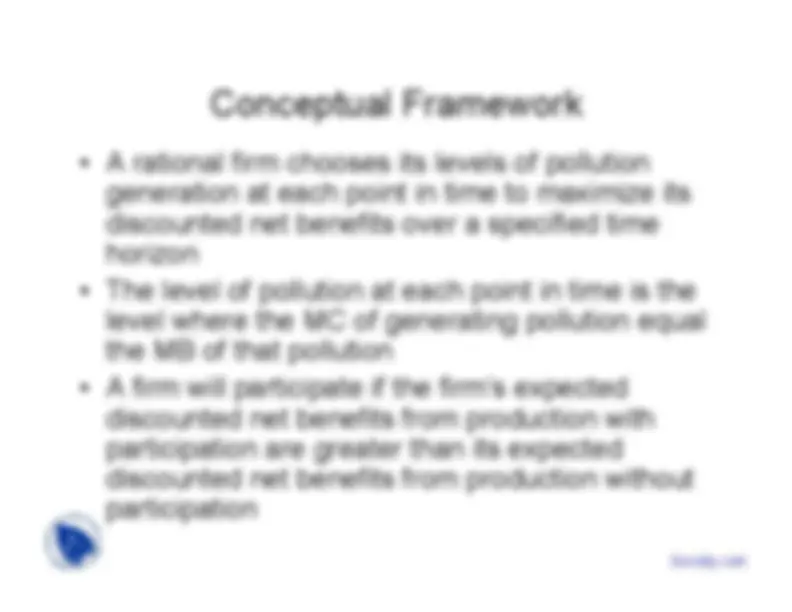
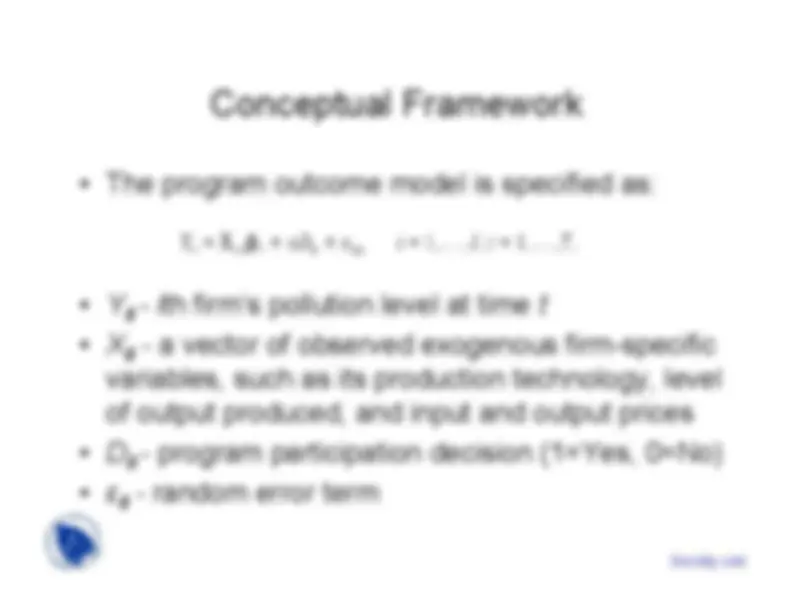
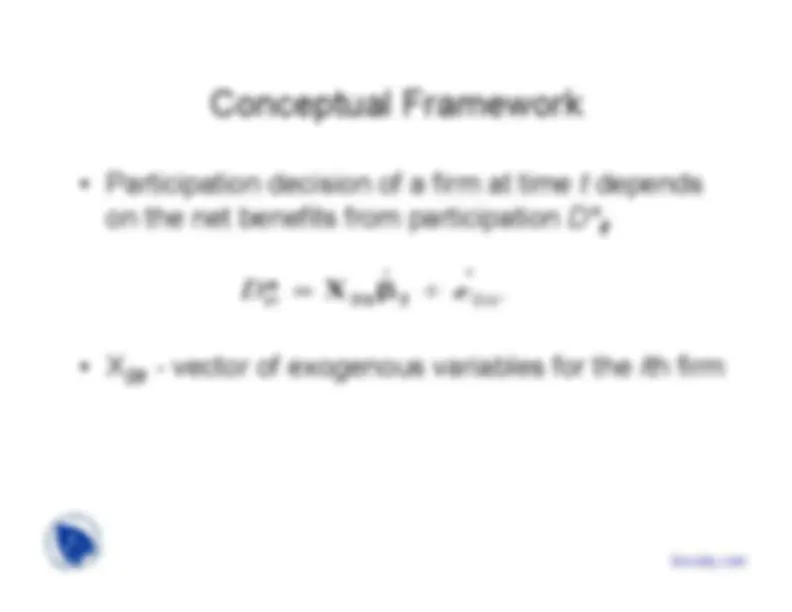
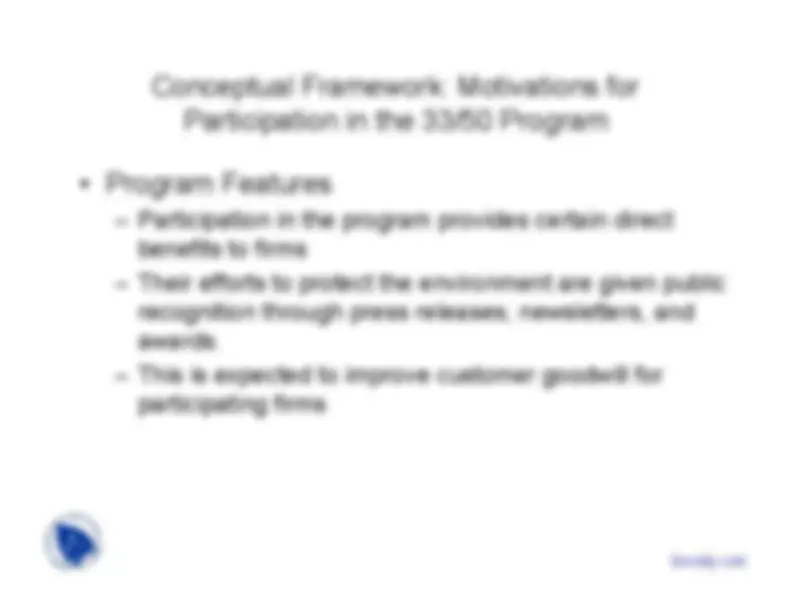
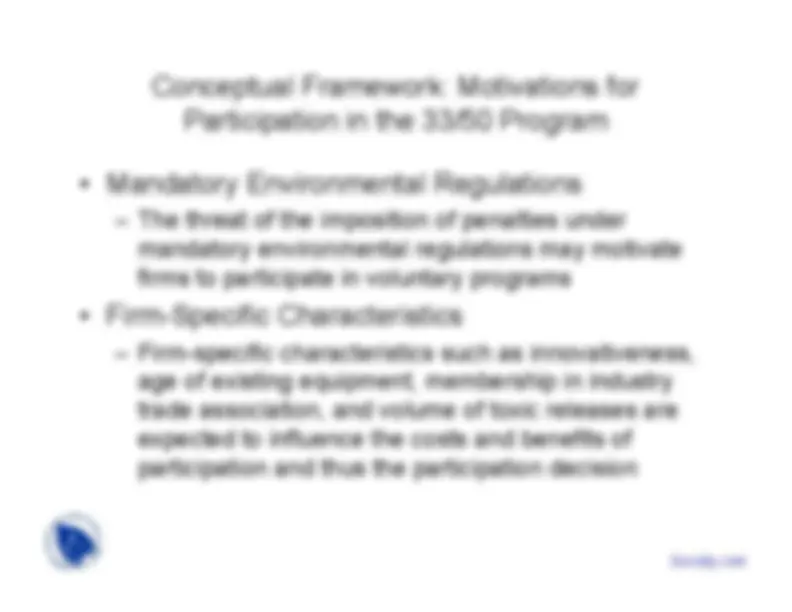
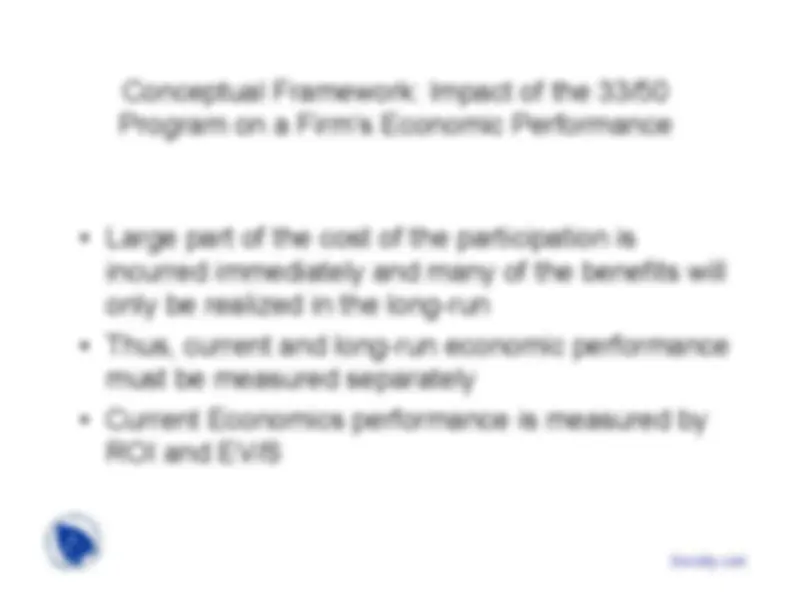
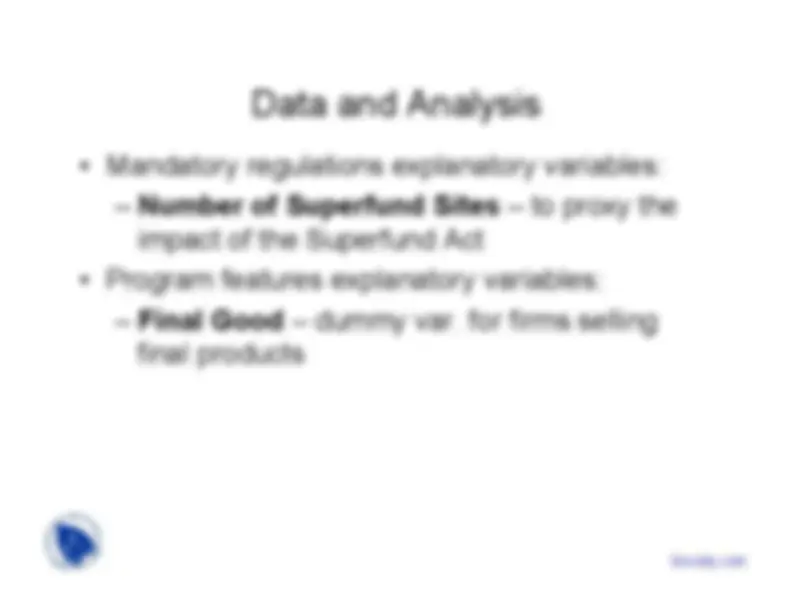
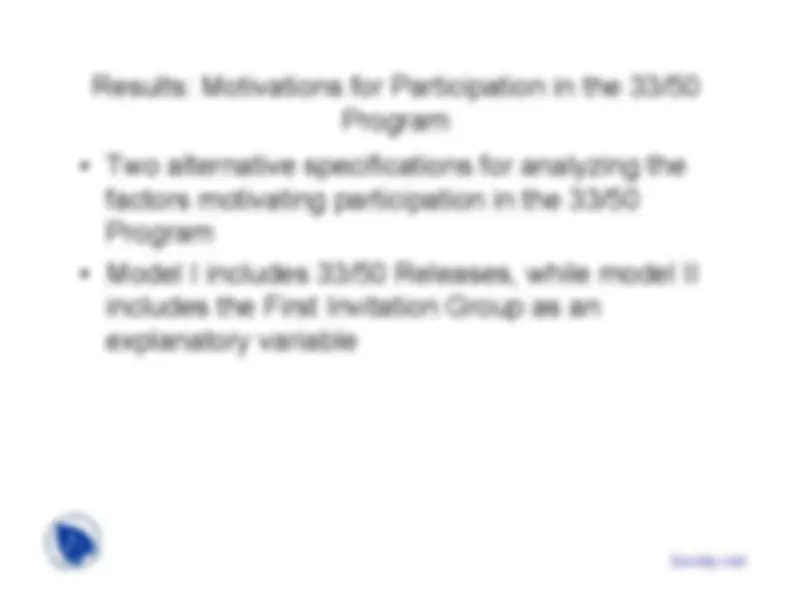
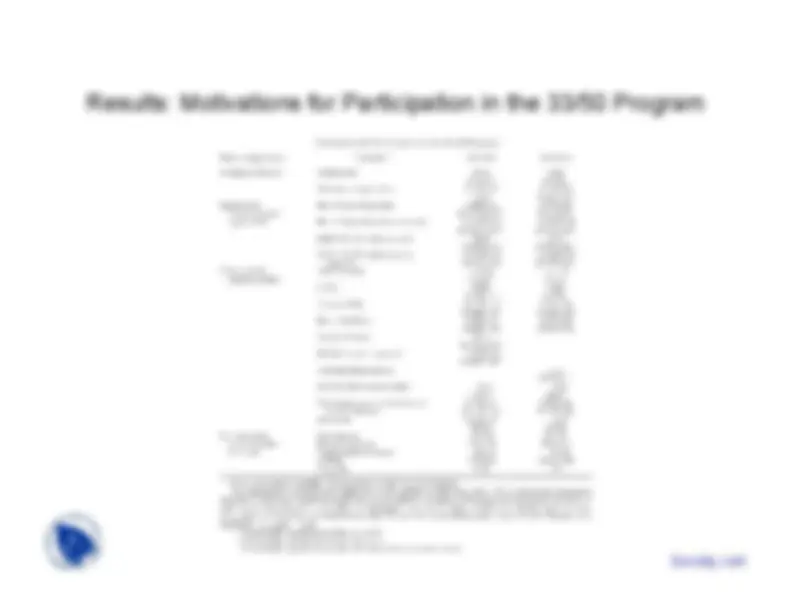
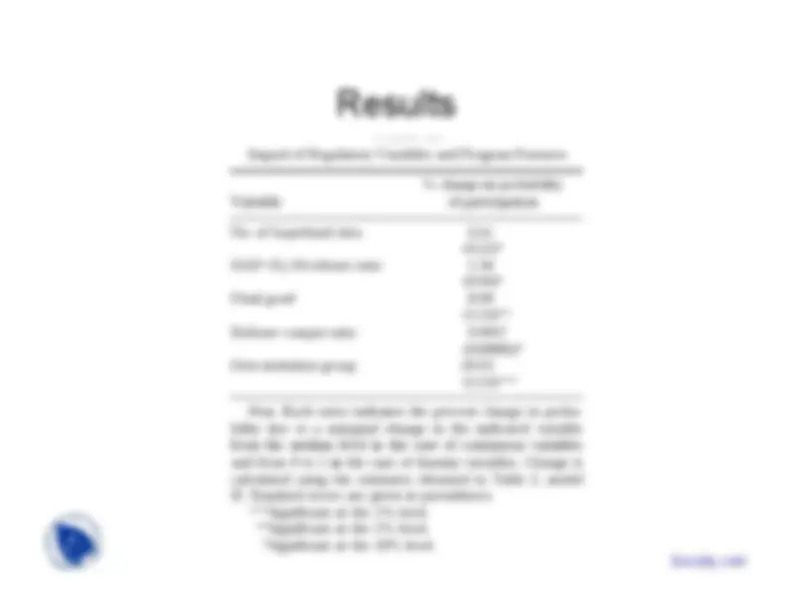


Study with the several resources on Docsity

Earn points by helping other students or get them with a premium plan


Prepare for your exams
Study with the several resources on Docsity

Earn points to download
Earn points by helping other students or get them with a premium plan
Community
Ask the community for help and clear up your study doubts
Discover the best universities in your country according to Docsity users
Free resources
Download our free guides on studying techniques, anxiety management strategies, and thesis advice from Docsity tutors
This paper investigates the motivations for firms to participate in the 33/50 program and its impact on toxic releases and economic performance in the us chemical industry. The study uses a rational firm framework and a probit model to analyze firm-level data from 1991-1995.
Typology: Slides
1 / 18

This page cannot be seen from the preview
Don't miss anything!











voluntary 33/50 Program
and economic performance of firms in theU.S. chemical industry
The program outcome model is specified as:
-^
it^
- i
th firm’s pollution level at time
t
it^
it^
εit
Participation decision of a firm at time
t
depends
on the net benefits from participation
it
2it
i
th firm
Conceptual Framework: Motivations for
Participation in the 33/50 Program
Arora and Cason (1995)– participation is motivated by size, financial
characteristics, and desire for public recognition
This paper extends the above findings byhypothesizing that the incentives for participationarise from the following sources:– Program Features– Mandatory Environmental Regulations– Firm-Specific Characteristics
Conceptual Framework: Motivations for
Participation in the 33/50 Program
Program Features– Participation in the program provides certain direct
benefits to firms
recognition through press releases, newsletters, andawards.
participating firms
Conceptual Framework: Impact of the 33/50Program on a Firm’s Economic Performance
-^
Large part of the cost of the participation isincurred immediately and many of the benefits willonly be realized in the long-run
-^
Thus, current and long-run economic performancemust be measured separately
-^
Current Economics performance is measured byROI and EV/S
The study utilizes firm-level data onenvironmental and financial variables of publiclytraded firms with SIC code 28 (chemicalindustry)
-^
Probit model with pooled time series and cross-sectional data was used to investigate thedeterminants of participation decision of firmsover the period 1991-
-^
246 pooled observations
Mandatory regulations explanatory variables:–
Number of Superfund Sites
impact of the Superfund Act
Program features explanatory variables:–
Final Good
final products
Results: Motivations for Participation in the 33/
Program
Two alternative specifications for analyzing thefactors motivating participation in the 33/50Program
-^
Model I includes 33/50 Releases, while model IIincludes the First Invitation Group as anexplanatory variable
Results: Motivations for Participation in the 33/
Program
Both models show that the desire for publicrecognition and increased consumer goodwillprovide statistically significant incentives forfirms selling
final goods
to participate in the
program
-^
members are significantly more likely to
participate than nonmembers
-^
The negative sign of
age of assets
indicates
that firms with older assets are more likely toparticipate
Results: Motivations for Participation in the 33/
Program
-^
Firms with a high ratio of 33/50 releases to total toxicreleases are less likely to participate in the program,because these firms would find it more difficult tosubstitute other chemicals for 33/50 chemicals
-^
Model I shows that firms with larger 33r50 releases aresignificantly more likely to participate
-^
A firm’s inclusion in the first invitation group appears tobe a better indicator of its participation decision